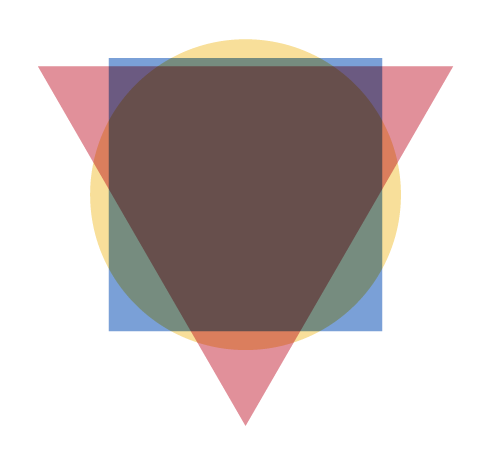Thirding
“A thesis in three parts, THIRDING is first and foremost an installation space containing one body of drawings, two projected videos, and numerous sculptural objects of varying sizes. A spatial experience, the viewer vacillates between being outside the work observing it as art and being within the space as experience. The work itself moves between the personal, the aesthetic, and the philosophical, quilting it all together to create a shifting experiential space that encapsulates the physical, the social, and the organic.
“[T]hirding produces what might best be called a cumulative trialectics that is radically open to additional otherness, to a continuing expansion of spatial knowledge.”
- Edward Soja
THIRDING puts forward the proposition that symbols, in this case shapes, can be used visually to explore the idea of space metaphorically. Specifically the artwork within this series explores the premise that the square is the base unit for physical space, the triangle is the base unit for social space, and a clothing hanger shape, representative of the body, is the base unit for organic space. This work comes out of previous investigations into production of space - physical and social, and perceptions of distance - physical and theoretical. A compilation of works shown spatially, it looks at the relationship of the related concepts of space and place.
“We are, and always have been, intrinsically spatial beings, active participants in the social construction of our embarking spatialities.”
- Edward Soja
With this theoretical foundation, the empirical basis to this body of work is my experience of passing into motherhood. My body’s transition into becoming a space of its own as an inhabited physical and social space instigated the inquiry into an individual’s relationship to the formation of space.
“Wholes and parts cannot exist by themselves either at a biological or social level.”
- Arthur Koestler
The concept of three was acutely present during this experience of bearing life. My body went through many iterations: a singular body, a fertile body in motion with a father body, a two-in-one pregnant body, a transitional birthing body, a separated postpartum dual-body, and finally one-third of a familial body. No longer was I a singular person. I was now part of this intricate thirding process that quilted together the composition of my self, my baby, and my partner.
“Quilts are not made in isolation.”
- Linda Eaton
THIRDING uses the patchwork quilt as a metaphoric through-line and a guiding principle. These works look to the quilt as a symbolic experience of the intentional construction of physical, social, and organic space. Expanding on past inquiries into movement through space and the use of space, this body of work becomes about the building of a space, much like the marking of a territory to create a place, or the piecing together of patches to create a quilt. This building/quilting/thirding brings fragments together to shape a space with intentionality and care.
“[A] spatial code is not simply a means of reading or interpreting space: rather it is a means of living in that space, of understanding it, and of producing it.”
- Henri Lefebvre
This thirding experience led me to consider the idea of a family unit and how that played into the construction of community, leading me to ask how societal space is constructed, what are its’ building blocks, and how might this be philosophically and visually expressed and empirically lived. THIRDING is a proposition for answering these questions.”
excerpt from thesis paper, 2016



















